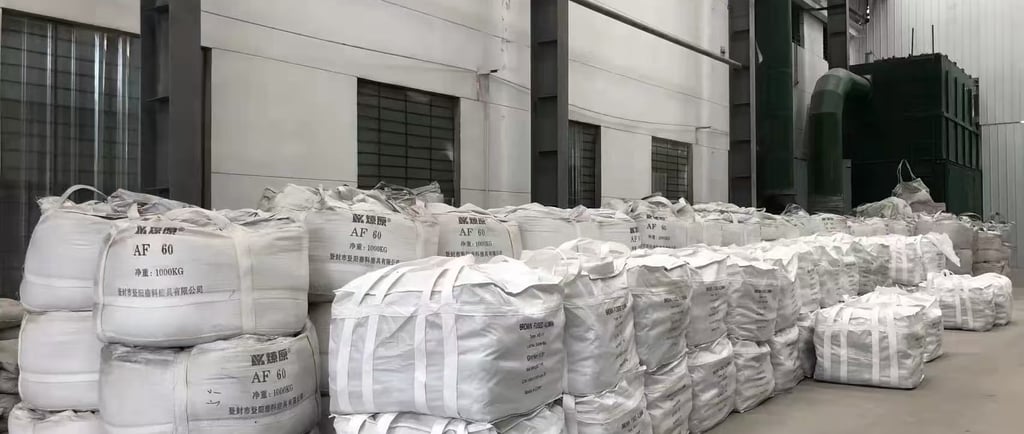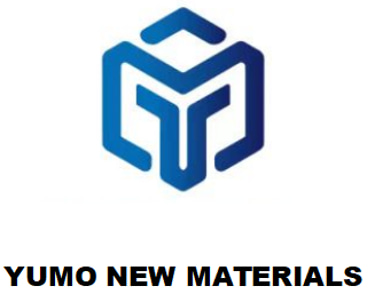HENAN YUMO: Engineered Precision, Uncompromised Performance
white alumina vs silicon carbide
White Alumina vs Silicon Carbide: The Ultimate Abrasives Showdown
6/27/20254 min read


White Alumina vs Silicon Carbide: The Ultimate Abrasives Showdown
Choosing the Right Grain Could Slash Your Production Costs by 40%
The Atomic-Level Divide: Why Composition Dictates Performance
White Alumina (Al₂O₃) begins with purified bauxite fused at 2,100°C, achieving exceptional purity levels exceeding 99.5% aluminum oxide. Its crystalline structure forms hexagonal alpha-phase grains that fracture predictably under pressure, continuously exposing fresh cutting edges. This self-sharpening property makes it exceptionally stable when grinding temperature-sensitive alloys like aerospace titanium, as it dissipates heat efficiently while maintaining consistent material removal rates.
Silicon Carbide (SiC) is born in electric arc furnaces where silica sand and petroleum coke react above 2,200°C. Its tetrahedral carbon-silicon bonds create one of the hardest synthetic materials on Earth, rating 9.5 on the Mohs scale compared to alumina’s 9.0. This extreme hardness comes with inherent brittleness—grains fracture aggressively under impact, making SiC ideal for fast stock removal on non-metallic materials.
Performance Showdown: Matching Abrasive to Application
Metalworking Applications: Precision vs. Aggression
White Alumina Dominates Aerospace Alloys
When grinding titanium or nickel superalloys, alumina’s high fracture toughness prevents premature grain shedding. Its near-zero iron content—typically below 0.03%—eliminates contamination that could compromise surgical implants. In ultra-fine grits like #8000, it delivers mirror finishes under 0.05 μm Ra on turbine blades, a feat unattainable with silicon carbide.Silicon Carbide’s Metalworking Limitations
SiC chemically reacts with ferrous metals, allowing iron diffusion into abrasive grains that accelerates wheel wear. Under the high pressures of alloy grinding, its brittle grains shatter excessively, increasing consumption by 30% compared to alumina. This makes it cost-prohibitive for precision metal applications.
Non-Metallic Materials: Where Silicon Carbide Reigns
SiC’s Dominance in Brittle Material Processing
When cutting glass, ceramics, or carbon fiber composites, silicon carbide’s razor-sharp grains cleave atomic bonds with surgical precision, minimizing subsurface damage. Its non-reactive chemistry prevents resin smearing in carbon-fiber-reinforced polymers (CFRP). For silicon wafer dicing, #1200-#2000 SiC grits produce under 5 μm edge chipping—significantly outperforming alumina.Alumina’s Struggles with Hard Non-Metallics
Against materials like sapphire or silicon carbide ceramics, alumina’s lower hardness causes rapid grain rounding. Processing times double compared to SiC, making it economically unviable for optics manufacturing or advanced ceramic machining.
Extreme Environment Stability
Silicon Carbide’s Thermal Superiority
Withstanding temperatures to 1650°C—450°C higher than alumina’s limit—SiC excels in dry grinding applications. Its exceptional thermal conductivity (320 W/m·K) pulls heat away from workpieces three times more efficiently than alumina, virtually eliminating thermal damage in resin-free operations.Alumina’s Chemical Resilience
White alumina remains inert in acidic or alkaline coolants (pH 4-12), making it indispensable for wet polishing medical devices. Silicon carbide slowly degrades in these environments, releasing silica particles that contaminate precision components.
The True Cost Analysis: Beyond Price Per Kilogram
Operational Economics Exposed
While raw silicon carbide commands a 65-80% price premium over white alumina ($1,500-2,200 vs. $850-1,200 per metric ton), the real cost difference emerges in application-specific performance:
In aerospace alloy grinding, alumina’s extended tool life—often 40% longer than SiC—reduces consumable costs by approximately $18,000 annually for mid-sized operations. Its non-toxic composition allows simple landfill disposal, whereas SiC requires expensive silicon sludge treatment.
However, for carbon fiber composite machining, silicon carbide’s 50% longer lifespan reverses this advantage. Its lower density (3.21 g/cm³ vs. alumina’s 3.95) provides 30% greater coverage in blasting applications, offsetting the higher initial cost.
Hidden Cost Drivers
Silicon carbide’s reactivity forces manufacturers to use premium vitrified bonds, increasing wheel costs by 25%. Alumina’s density-driven coverage limitations necessitate higher media volumes for large-scale surface treatment. Energy-intensive SiC production consumes 22 kWh/kg—22% more than alumina’s 18 kWh/kg—impacting both cost and sustainability metrics.
Innovations Blurring the Lines: Hybrid Solutions
Metal Matrix Composites (MMCs)
Advanced spray deposition now creates Al/SiC composites where silicon carbide reinforcement (15-25% volume) boosts aluminum’s wear resistance by 300%. Crucially, sub-5μm alumina particles act as interfacial bonding agents, overcoming historical challenges in ceramic-metal adhesion.
Hybrid Grinding Wheels
Leading manufacturers now combine 70% alumina with 30% silicon carbide. This blend leverages SiC’s aggressive cutting on carbon fiber elements while using alumina to deliver mirror finishes on titanium sections of aerospace hybrid components. The synergy reduces cycle times by 35% compared to single-abrasive solutions.
Nano-Engineered Coatings
Vapor-deposited alumina layers (3-5μm) now coat silicon carbide grains. This innovation preserves SiC’s cutting aggression while adding alumina’s chemical resistance—proving ideal for wet grinding of fiberglass-reinforced composites where pH fluctuations degrade pure SiC.
Decision Framework: 5 Critical Selection Factors
Material Hardness
Choose silicon carbide for materials above 7.5 Mohs (ceramics, glass, granite)
Opt for alumina when working metals below 4.0 GPa Vickers hardness (titanium, tool steels)
Thermal Sensitivity
Silicon carbide’s heat dissipation dominates dry grinding, while alumina’s chemical stability wins in coolant-intensive processes.Surface Finish Requirements
For Ra > 0.8 μm: Silicon carbide accelerates productivity
For Ra < 0.4 μm: Alumina’s consistent grains are mandatoryChemical Compatibility
Alumina withstands acidic/alkaline environments; SiC suits neutral-pH operationsLifecycle Costing
Calculate $/part: (Abrasive cost × consumption rate) + disposal fees + downtime costs
Example: Alumina reduces titanium blade finishing costs by $0.18/part despite higher initial price
Industry-Specific Recommendations
Aerospace Manufacturing
Turbine Blades: White alumina #400-#8000 sequence
Carbon Composite Wings: Silicon carbide-coated abrasives
Hyponenter Blisks: 70/30 Al₂O₃/SiC hybrid wheels
Medical Device Production
Titanium Implants: Low-iron alumina #2000-#8000
Ceramic Joints: Green silicon carbide #600-#1500
Semiconductor Fabrication
Wafer Slicing: Premium SiC #1200 (D50=9.5μm)
Backgrinding: Alumina #2000-#12000 slurries
Future Trends: The Next Generation
Gradient Abrasives: Laser-sintered tools with SiC cores and alumina surfaces
Self-Lubricating Grains: Micro-encapsulated MoS₂ in alumina matrices
AI-Driven Selection: Digital twins predicting optimal abrasive blends
"Our switch to alumina/SiC hybrids reduced Inconel machining costs by 37% while achieving Ra 0.3 μm consistently."
— Elena Rodriguez, Production Director, Aerotech Manufacturing
